Kôdô, also known as "the way of perfume", is a refined Japanese art that is often overlooked but is deeply rooted in the country's cultural tradition. This art, which values the act of appreciating perfumes, is classified among the classic arts of refinement in Japan, alongside the tea ceremony and flower arranging. Kôdô does not just seek to smell good fragrances; it is a meditation in movement, a quest for beauty in the ephemeral and a way to develop spiritual and emotional sensitivity.
Everything you need to know about the history of Kôdô
Kodô was introduced to Japan with the arrival of Buddhism in the 6th century, but it was not until the Heian period that the art of incense began to take shape among the nobility. The use of incense developed as a refined courtesan practice, where one enjoyed not only the aroma but also the act of "listening" to the scents. Kôdô competitions, where participants had to blindly identify different incenses, were particularly popular among the aristocracy, reflecting the high level of cultural sophistication of the time.
Over the centuries, kôdô has evolved to incorporate elements of Zen philosophy, which has enriched its practice with an emphasis on the spiritual and meditative experience of olfaction. These developments not only solidified kodô as an art form but also as a path to spiritual enlightenment, practiced by monks keen to cultivate an inner presence and heightened sensitivity to the natural world.

The principles of Kôdô
At the heart of kôdô are the "Rikkoku Gomi", the six classic categories of fragrances derived primarily from agarwood, each associated with natural elements and specific emotions . These categories help practitioners refine their olfactory perception and express subtle emotional responses to different aromas. Kôdô teaches that each scent has the ability to transform the inner space and purify the mind, which is essential for achieving deep tranquility.
In addition to Rikkoku Gomi, kôdô is governed by the principle of "Mon-koh", or "listening to the scent", which is the practice of appreciating incense in a meditative state. . This practice is not only about smelling, but also listening to what the scents have to "say", diving deep into consciousness and exploring the complex nuances of the incenses burned. This process is believed to help cultivatepatience, gratitude, and a deeper understanding of oneself.

The tools and ingredients of Kôdô
Kôdô uses a variety of specialized tools that reflect the aesthetics and philosophy of the art. Among them, the "kōdōgu", the set of tools for the kôdô, includes delicately designed incense burners, charcoal containers, tweezers, and special ashes to maintain the ideal combustion temperature. These tools are often made from natural materials and are considered works of art themselves.
The ingredients used in kodô, mainly agarwood (also called aloe), are renowned for their ability to produce rich, deep scents. Agarwood is particularly valued for its olfactory qualities which evolve with time and combustion, providing an olfactory experience which can vary considerably depending on the age, origin and treatment of the wood. Other ingredients, such as myrrh resin and various aromatic herbs, are also used to create complex incense blends.

How does the Kôdô ceremony take place?
A typical kôdô ceremony, called "kumikō", takes place in a quiet, aesthetically prepared space, often a room designed specifically for the art of incense. The kôdô master prepares incense on a special burner while inviting participants to place themselves in a state of meditative receptivity. Each participant is then given the opportunity to listen to the incense, in other words, to fully appreciate it without distraction and in silence.
During the ceremony, different qualities of incense are presented and each is accompanied by poetry or a story that completes the olfactory experience. Participants are encouraged to share their thoughts and discuss the feelings evoked by each scent. This interaction makes each kodô session unique and strengthens the bond between participants.

The importance of incense in Japan
As you will have understood, incense plays an essential role in the cultural and spiritual traditions of Japan, where it is used to purify, honor > and meditate. Initially introduced with Buddhism, incense has become central to religious practices, particularly during Buddhist and Shinto ceremonies, where it symbolizes the purification and sanctification of space. This usage highlights the deep connection between incense, spirituality and respect for ancestors and gods.
Beyond its use in religious contexts, incense is also appreciated in homes for its pleasant scent and its calming properties. It is often burned to create a peaceful atmosphere, promoting relaxation and well-being. Incense is thus integrated into daily life, reflecting Japanese values of harmony, respect and tranquility, and reinforcing its essential role in Japanese culture.

The 5 virtues of perfume according to the Japanese
-
Purification of the mind: Fragrance is used to cleanse the mind and clear thoughts, which is essential in many Japanese spiritual and meditative practices. It helps establish an environment conducive to concentration and serenity.
-
Heals Loneliness: In Japanese philosophy, incense is seen as a silent companion that can soothe loneliness, providing comfort and peace to those who find themselves alone or contemplative.
-
Tranquility amidst the buildup: Fragrance has the unique ability to calm the mind even when faced with hustle and bustle or daily stress. It is a valuable resource for maintaining personal balance in an often chaotic world.
-
Awakens love and strengthens the soul: Pleasant scents are said to stimulate feelings of love and strengthen the spirit, nourishing interpersonal relationships and connection with oneself.
-
Brings deep peace: Finally, perfume is considered a means of achieving deep peace, often used during meditation or other spiritual practices to help achieve a state of tranquility and peace. harmony with the universe.
These five virtues demonstrate how perfume is integrated not only in ritual practices but also in improving daily well-being, reflecting the holistic approach to health and of spirituality in Japanese culture.

Awaji: the island of fragrances
Awaji Island, located in Hyogo Prefecture, is renowned for its historical role in incense production in Japan. According to legend, it was on Awaji that incense was first made in the land of the Rising Sun, and the island is often called "the island of perfumes" because of its rich history and its continued production of high quality incense. The island's artisans use traditional techniques that have been passed down from generation to generation, ensuring that the know-how and culture of kodô remains alive.
Visiting Awaji will not only offer you the opportunity to discover these ancient traditions but also to participate in workshops where you can learn how to make your own incense and understand the subtle nuances that distinguish good incense. These experiences allow visitors to connect more deeply with the art of kodo and recognize its importance in maintaining Japanese culture.

We are coming to the end of this article, now kôdô no longer has any secrets for you! With its profound practices and enriching fragrances, it remains a living testimony to the cultural and spiritual sophistication of Japan. This art, more than a simple appreciation of aromas, is a path to self-understanding and inner peace. By integrating kôdô into modern life, we can not only reconnect with an ancient tradition but also cultivate a more conscious and reflective presence. Whether you are a novice or a connoisseur, exploring the path of perfume will offer you a unique perspective on harmony and beauty that will deeply enrich your daily experience.







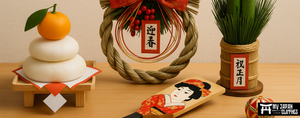
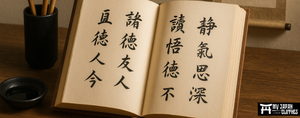










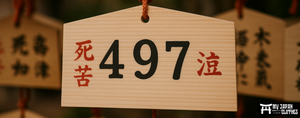







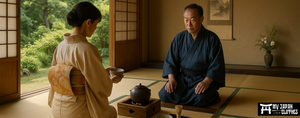
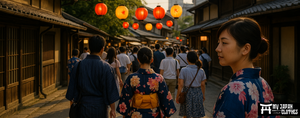




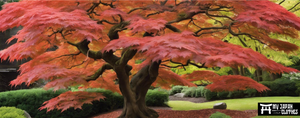

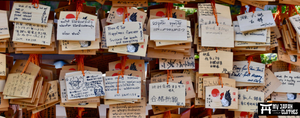

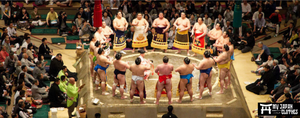













Leave a comment